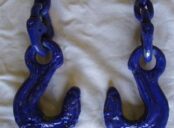Bundet Eget Kapital: En genomgående analys och mätning

Introduction ()
”Bundet eget kapital” is an essential aspect of financial management and understanding its various types and measurements is crucial for individuals seeking to optimize their financial portfolios. In this comprehensive article, we will provide an in-depth overview of ”bundet eget kapital,” highlighting its significance, popular types, quantitative measurements, differences between them, and a historical analysis of their advantages and disadvantages.
Overview of Bundet Eget Kapital (H2)

Bundet eget kapital, also known as retained earnings or equity, refers to the portion of a company’s profits or net worth that is reinvested back into the business rather than distributed to shareholders. It represents the cumulative amount of money that a company has retained over time, enabling it to finance growth, research, and development, and withstand economic downturns.
Types of Bundet Eget Kapital (H2)
Several types of bundet eget kapital exist, including:
1. Share Capital: This represents the initial investment made by shareholders in exchange for ownership rights in a company.
2. Reserves: Created by setting aside a portion of profits to create financial cushions or funds for future use. Reserves can be categorized into various subtypes such as general, specific, or statutory reserves.
3. Retained Earnings: Accumulated profits that have not been distributed as dividends.
4. Other Comprehensive Income: Represents gains or losses from fluctuations in the value of certain financial assets, foreign currency translations, and unrealized gains or losses on available-for-sale investments.
Comprehensive Presentation of Bundet Eget Kapital (H2)
In this section, we will delve into each type of bundet eget kapital in detail, highlighting their purpose, popularity, and relevance in different industries. We will discuss the significance of each type in terms of financial stability, long-term growth, and the ability to attract potential investors.
Quantitative Measurements of Bundet Eget Kapital (H2)
Financial metrics play a vital role in evaluating a company’s performance and the strength of its bundet eget kapital. This section will explore key quantitative measurements used to analyze bundet eget kapital, including:
1. Return on Equity (ROE): Measures the profitability of a company by calculating the net income generated from shareholders’ equity.
2. Dividend Payout Ratio: Determines the percentage of earnings distributed as dividends to shareholders.
3. Equity Ratio: Evaluates the proportion of a company’s assets funded by its own equity, providing insights into financial leverage and solvency.
4. Earnings per Share (EPS): Presents the portion of a company’s net income allocated to each outstanding share of common stock.
5. Price to Earnings (P/E) Ratio: Reflects the market’s valuation of a company by comparing its stock price to its earnings per share.
Differences Between Various Bundet Eget Kapital (H2)
While all types of bundet eget kapital contribute to a company’s financial stability, each offers unique characteristics and benefits. This section will compare and contrast the differences between them, such as their purpose, accessibility, risk levels, and impact on a company’s balance sheet and financial statements.
Historical Analysis of Advantages and Disadvantages (H2)
Throughout history, different forms of bundet eget kapital have presented both advantages and disadvantages for companies. This section will provide a historical perspective on the pros and cons of various bundet eget kapital types, including their impact on company growth, shareholder returns, tax implications, and regulatory requirements. By understanding the lessons from the past, individuals can make informed decisions when managing their own financial portfolios.
Conclusion
In conclusion, bundet eget kapital plays a vital role in a company’s financial stability and growth. Understanding its various types, quantitative measurements, differences, and historical advantages and disadvantages is essential for individuals seeking to optimize their investments. By mastering the nuances of bundet eget kapital, individuals can make informed decisions and build resilient financial portfolios to achieve their long-term financial goals.
(Note: The
indicates the place in the text where a video clip can be inserted to enhance the reader’s understanding of the topic. The video should provide visual examples or additional explanations related to bundet eget kapital.)





















